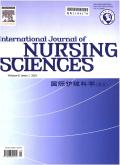Risk prediction models for post-intensive care syndrome of ICU discharged patients: A systematic review
IF 3.1
3区 医学
Q1 NURSING
引用次数: 0
Abstract
Objectives
This systematic review aimed to assess the properties and feasibility of existing risk prediction models for post-intensive care syndrome outcomes in adult survivors of critical illness.
Methods
As of November 1, 2023, Cochrane Library, PubMed, Embase, CINAHL, Web of Science, PsycInfo, China National Knowledge Infrastructure (CNKI), SinoMed, Wanfang database, and China Science and Technology Journal Database (VIP) were searched. Following the literature screening process, we extracted data encompassing participant sources, post-intensive care syndrome (PICS) outcomes, sample sizes, missing data, predictive factors, model development methodologies, and metrics for model performance and evaluation. We conducted a review and classification of the PICS domains and predictive factors identified in each study. The Prediction Model Risk of Bias Assessment Tool was employed to assess the quality and applicability of the studies.
Results
This systematic review included a total of 16 studies, comprising two cognitive impairment studies, four psychological impairment studies, eight physiological impairment studies, and two studies on all three domains. The discriminative ability of prediction models measured by area under the receiver operating characteristic curve was 0.68–0.90. The predictive performance of most models was excellent, but most models were biased and overfitted. All predictive factors tend to encompass age, pre-ICU functional impairment, in-ICU experiences, and early-onset new symptoms.
Conclusions
This review identified 16 prediction models and the predictive factors for PICS. Nonetheless, due to the numerous methodological and reporting shortcomings identified in the studies under review, clinicians should exercise caution when interpreting the predictions made by these models. To avert the development of PICS, it is imperative for clinicians to closely monitor prognostic factors, including the in-ICU experience and early-onset new symptoms.
ICU出院患者重症监护后综合征风险预测模型的系统回顾
目的本系统综述旨在评估危重症成年幸存者重症监护后综合征结局现有风险预测模型的特性和可行性。方法于2023年11月1日检索Cochrane Library、PubMed、Embase、CINAHL、Web of Science、PsycInfo、CNKI、SinoMed、万方数据库、中国科技期刊库(VIP)。在文献筛选过程中,我们提取了包括参与者来源、重症监护后综合征(PICS)结果、样本量、缺失数据、预测因素、模型开发方法以及模型性能和评估指标在内的数据。我们对每项研究中发现的PICS域和预测因素进行了回顾和分类。采用预测模型偏倚风险评估工具评估研究的质量和适用性。结果本系统综述共纳入16项研究,包括2项认知障碍研究、4项心理障碍研究、8项生理障碍研究和2项所有三个领域的研究。以受试者工作特征曲线下面积测量的预测模型判别能力为0.68 ~ 0.90。大多数模型的预测性能很好,但大多数模型存在偏倚和过拟合。所有的预测因素往往包括年龄、icu前功能障碍、icu内经历和早发新症状。结论总结了PICS的16种预测模型和预测因素。尽管如此,由于在审查中的研究中发现了许多方法和报告缺陷,临床医生在解释这些模型所做的预测时应谨慎行事。为了避免PICS的发展,临床医生必须密切监测预后因素,包括在icu的经历和早发新症状。
本文章由计算机程序翻译,如有差异,请以英文原文为准。
求助全文
约1分钟内获得全文
求助全文
来源期刊

International Journal of Nursing Sciences
Nursing-Nursing (all)
CiteScore
6.10
自引率
2.60%
发文量
408
审稿时长
25 days
期刊介绍:
This journal aims to promote excellence in nursing and health care through the dissemination of the latest, evidence-based, peer-reviewed clinical information and original research, providing an international platform for exchanging knowledge, research findings and nursing practice experience. This journal covers a wide range of nursing topics such as advanced nursing practice, bio-psychosocial issues related to health, cultural perspectives, lifestyle change as a component of health promotion, chronic disease, including end-of-life care, family care giving. IJNSS publishes four issues per year in Jan/Apr/Jul/Oct. IJNSS intended readership includes practicing nurses in all spheres and at all levels who are committed to advancing practice and professional development on the basis of new knowledge and evidence; managers and senior members of the nursing; nurse educators and nursing students etc. IJNSS seeks to enrich insight into clinical need and the implications for nursing intervention and models of service delivery. Contributions are welcomed from other health professions on issues that have a direct impact on nursing practice.
 求助内容:
求助内容: 应助结果提醒方式:
应助结果提醒方式:


